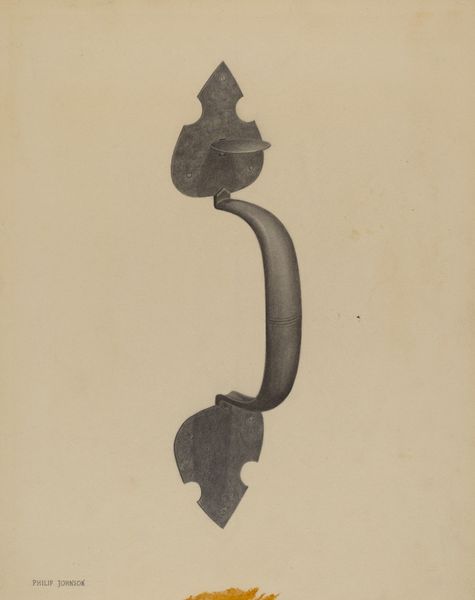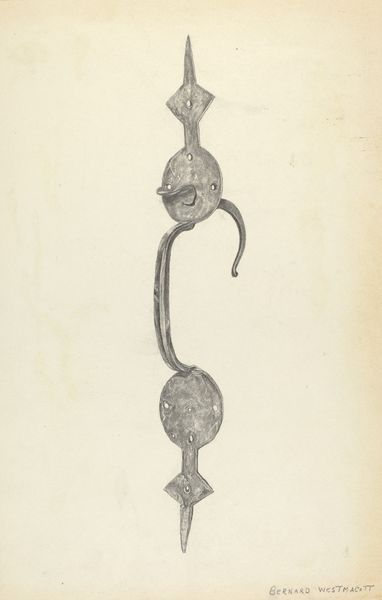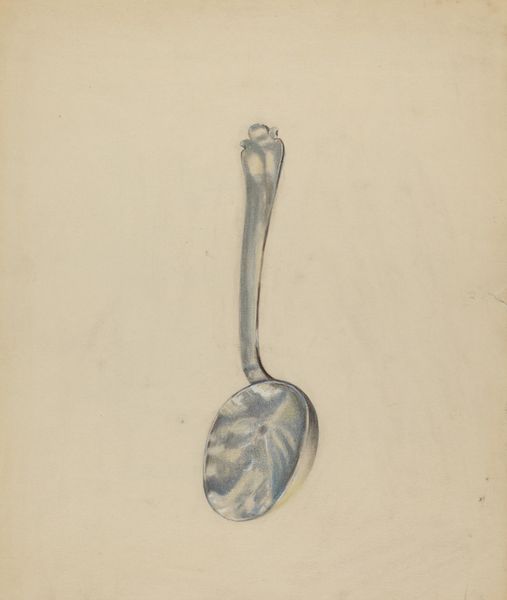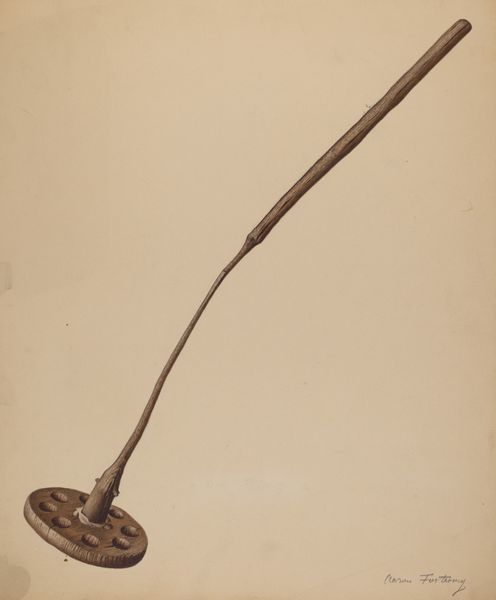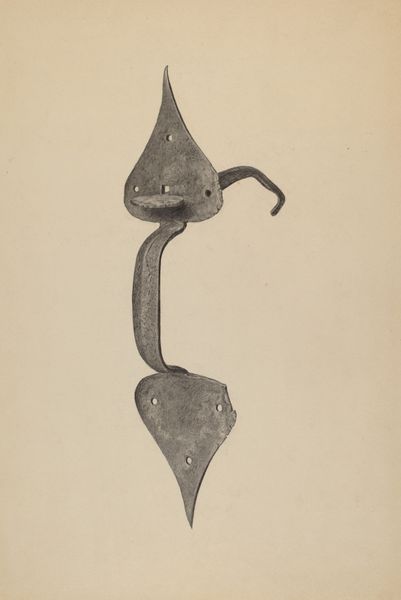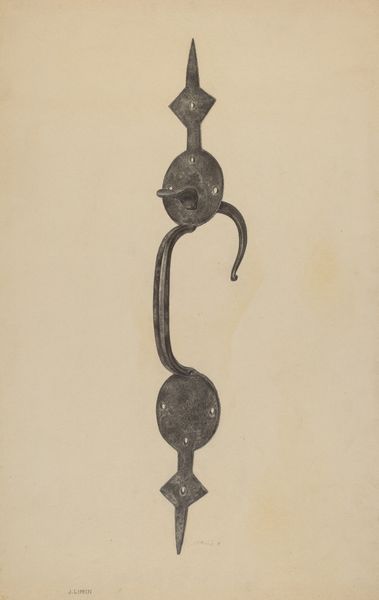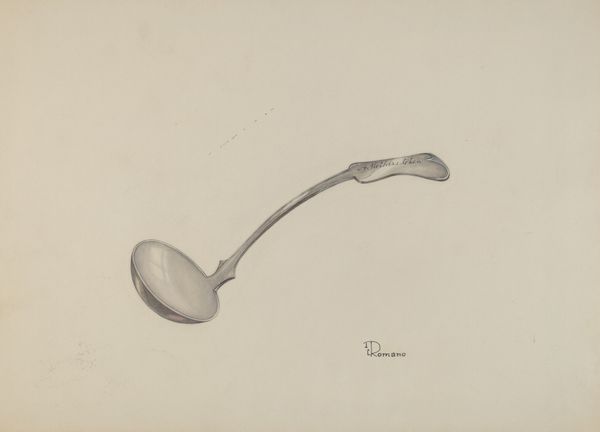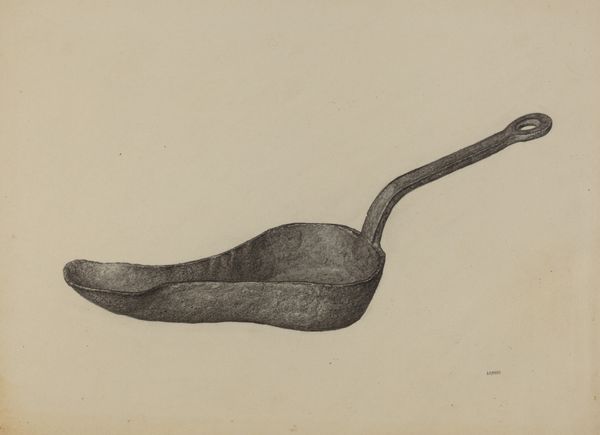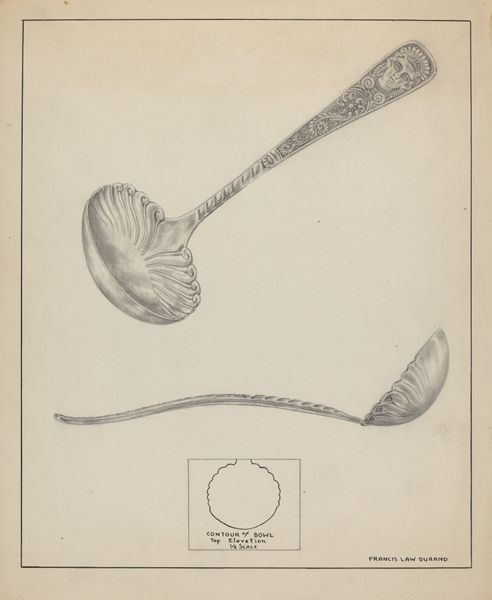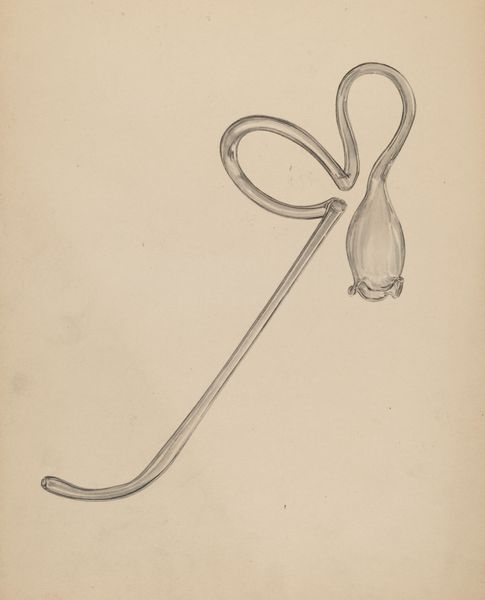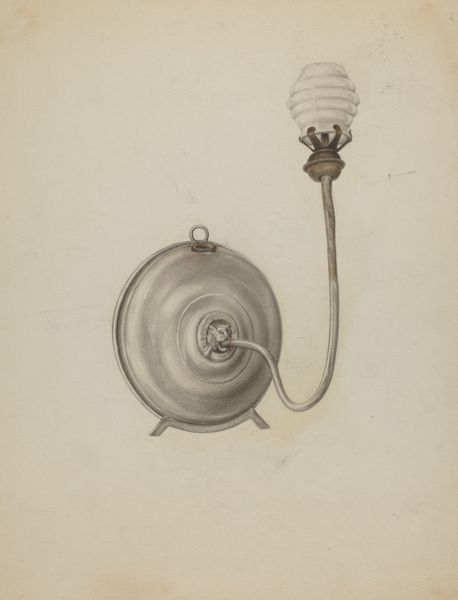
drawing, pencil
#
drawing
#
figuration
#
coloured pencil
#
pencil
#
academic-art
#
watercolor
#
realism
Dimensions: overall: 40.7 x 28.3 cm (16 x 11 1/8 in.)
Copyright: National Gallery of Art: CC0 1.0
Curator: Here we have Rosa G. Busey’s "Ladle," created around 1937 using pencil, colored pencil, and watercolor. Editor: It's deceptively simple at first glance, almost unassuming, but there's a remarkable delicacy in the rendering. I notice immediately how light plays on the bowl of the ladle. Curator: The choice of such an everyday object as a subject reflects the academic realism common during this period, aiming to elevate the ordinary through skillful depiction. It's interesting how domestic objects were starting to appear more frequently in fine art. Editor: Precisely. One can interpret this interest as part of a broader cultural movement. Post-Depression America witnessed this shift in attention to everyday material conditions, celebrating the design of objects in homes as signifiers of progress. Notice, though, the detailing on the handle — it hints at a certain class, it’s more ornate. The ladle isn't just utilitarian; it's about social status, isn’t it? Curator: Undeniably. Silverware, especially a decorative ladle like this, would signify wealth and refinement. Its presentation as a work of art complicates the relationship between functionality and artistry, hinting towards ideals within bourgeois society. The medium is fascinating— watercolor and pencil give it a softer, more accessible quality than, say, an oil painting of a similar subject. Editor: And that access is key. Think about the consumption of art at this time. Affordable drawings and watercolors democratized ownership, a far cry from oil paintings that usually adorned walls of private wealthy patrons. The accessibility of the art parallels the seemingly quotidian nature of the subject— it is within reach. And watercolor allows capturing subtle effects on this silvery object; that's craftsmanship itself on display. Curator: That's a brilliant point; this piece allows us to reflect upon social and artistic accessibility. A seemingly humble kitchen tool actually represents larger shifts in cultural and class dynamics of the era. Editor: Absolutely. An object embodies both material and social value. So, even in its simplicity, we are drawn into deeper exploration about its function within cultural structures of the past.
Comments
No comments
Be the first to comment and join the conversation on the ultimate creative platform.


